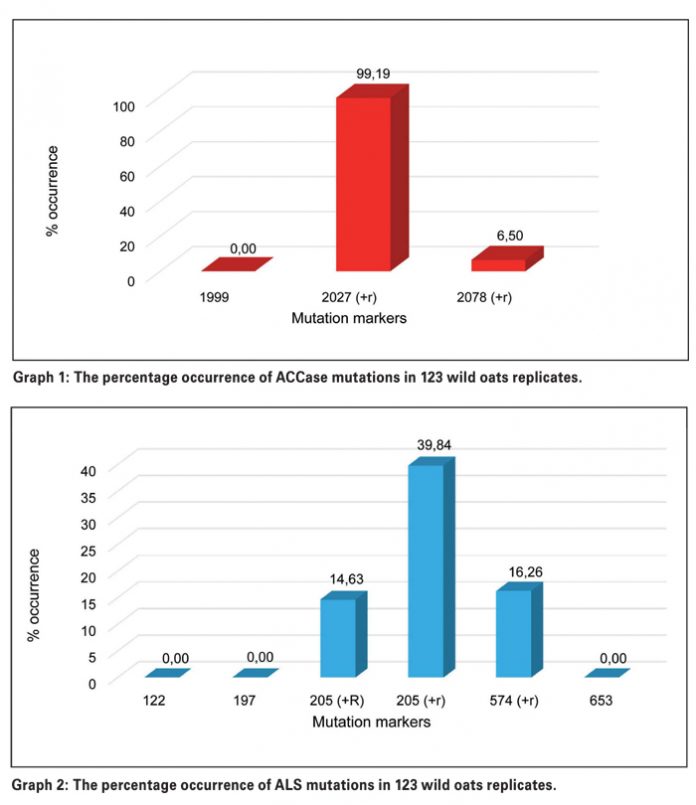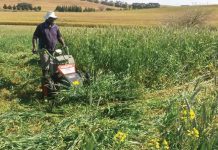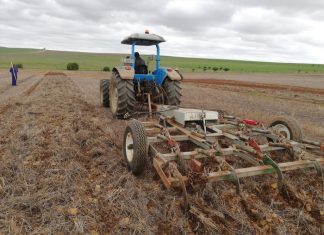September 2017
Hestia Nienaber and Dr Scott Sydenham, ARC-Small Grain, Bethlehem
Wild oats (Avena fatua) is a cosmopolitan grass-type weed that is able to grow over a wide spectrum of conditions, rendering it one of the worst agricultural weeds in the world. It is a serious weed in grain crops.
The problem with wild oats is that it lowers the quality of grain crops, especially crops such as wheat, oats and barley. Seeds of wild oats need to be removed during milling to ensure good grain quality. It also competes with the crop for water, nutrients and light.
Australian researchers have found that uncontrolled wild oats can reduce wheat yields by up to 80%. From literature, it is known that wild oats harbours diseases and pests, such as nematodes and crown rot.
Wild oats escape early herbicide applications as a proportion of the seeds germinate later than the crop. The continuous and widespread use of herbicides for the control of A. fatua has frequently resulted in the development of herbicide resistance and A. fatua is listed as the second most herbicide resistance prone weed in the world (Heap, 2017). In South Africa, this weed first developed multiple resistance in 1986.
There are several ways that a weed can become resistant to herbicides. Two of these mechanisms are non-target site resistance and target-site resistance. Sequestration and metabolisation of herbicides are examples of non-target site resistance.
Target-site resistance is when herbicides are unable to bind to the target-site it was intended for, due to a DNA sequence change/mutation and are therefore unable to inhibit that specific enzymatic/biochemical pathway and the plant survives.
Certain target-site mutation markers have been identified and developed in Australia and Europe. These mutation markers have been optimised by ARC-Small Grain researchers for identifying target-site resistance in grass weed species.
Mutation markers can distinguish between plants that are heterozygous (Aa) (one copy – resistant allele) or homozygous (AA) (two copies – resistant allele) resistant for each specific target-site mutation.
Depending on which mutation is detected, the heterozygous or homozygous state of resistance can exponentially increase the needed dosage of herbicide to achieve 50% mortality. What is also important to remember, is that resistant weed biotypes, on average, require ten to 30 times higher herbicide dosages than susceptible types.
Research results
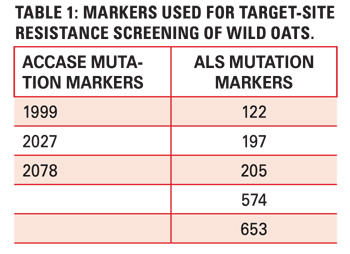 61 wild oats samples (123 replicates) from the Western Cape were screened with several mutation markers to detect possible target-site resistance. The markers used are indicated in Table 1.
61 wild oats samples (123 replicates) from the Western Cape were screened with several mutation markers to detect possible target-site resistance. The markers used are indicated in Table 1.
Ladder weights were used to determine if the sample contained the expected mutate alleles or not. +r indicates that the sample was heterozygous resistant (containing both the resistant and susceptible alleles) to that specific mutation marker and R indicates that the sample was homozygous resistant to that specific mutation marker.
Graph 1 and Graph 2 indicate to which herbicides the samples are resistant to. Where heterozygous genotypes to ACCase herbicides are detected, most ACCase herbicides, including clethodim (Select), clodinafop (Tiptop, Topik, Ultima), diclofop (Hoelon, Ravenger, Trigras), fluazifop (Fluazifop-P-butyl 125, Volley, Fusilade Forte), haloxyfop (Gallant Super, Grassclear, Scorp), butroxydim (not in South Africa), sethoxydim (Nabu), tralkoxydim (Trinity EC) and pinoxaden (Axial), should be avoided.
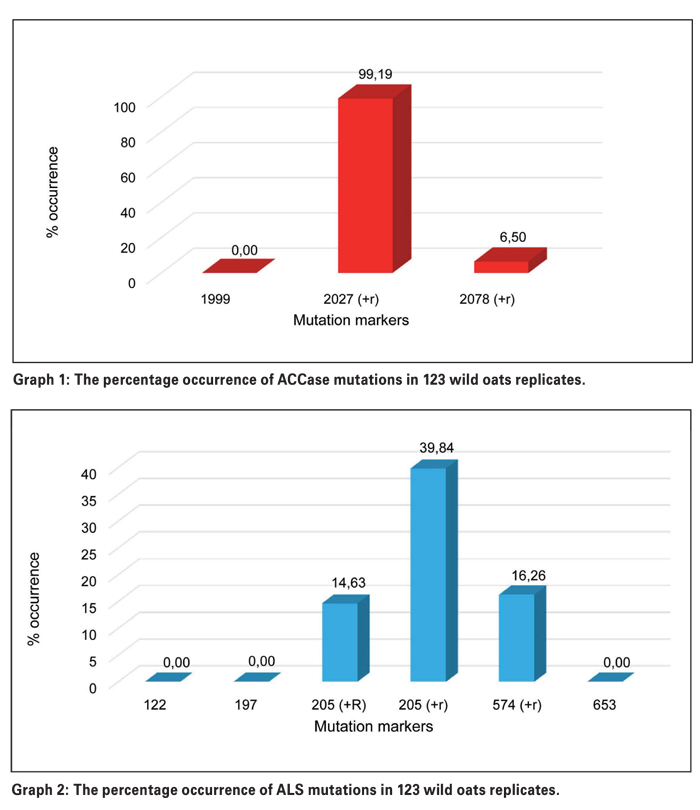
The use of any of the listed herbicides will result in reduced weed control and may result in homozygous resistant weed plants.
It is evident that the most prevalent mutations in the wild oats biotypes were ALS mutations 205 and 574 (rendering all Group B herbicides useless) and ACCase mutations 2027 and 2078 (indicating limited herbicide choice within the ‘fops’, ‘dims’ and ‘den’ herbicides) (Graph 1 and Graph 2).
How to get your grass weeds tested for resistance?
Producers are welcome to send grass weed seedlings or seeds to ARC-Small Grain, Bethlehem at ARC-Small Grain, S191 Blydskap Road, Bethlehem, 9700.
Remember:
- Seedlings must be kept moist (preferably in Ziplock bags) and must prefer-ably be couriered, as it will ensure that fresh seedlings arrive in Bethlehem.
- Indicate the GPS-co-ordinates where plant or seed samples were taken.
- Seeds must be stored in brown paper bags to prevent them from rotting.
- The number of seeds/seedlings must be a large enough bulk representative field sample to enable an accurate screening process.
- Make sure that a number of samples from the problematic field are sent in. One plant only will not be adequately representative of the problematic field. All samples received are screened in replicates of four to six times.
Summary
Target-site resistance does occur in wild oats samples received from the Western Cape. The impact of this is that limited/poor control will be obtained with herbicides from either Group A or Group B.
It is important to know the resistance status of your fields as to make informed choices of the herbicides needed for the spraying season. Knowing what to spray before you spray, can also prevent wasteful expenditure on a herbicide resistant field.
Resistance is able to spread from one farm to another over some distances, meaning that although you did not have resistance last year, it does not guarantee you will not have resistance this year. Producers are welcome to send in grass weed samples to be screened for target-site resistance to ARC-Small Grain.
For further information regarding this topic, contact Hestia Nienaber at 058 307 3420 or deweth@arc.agric.za or Dr Scott Sydenham at sydenhams@arc.agric.za.
Publication: September 2017
Section: Focus on



